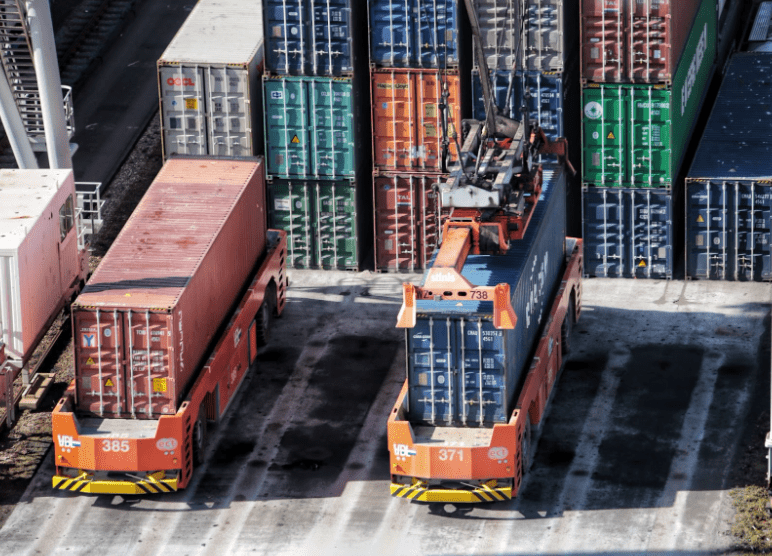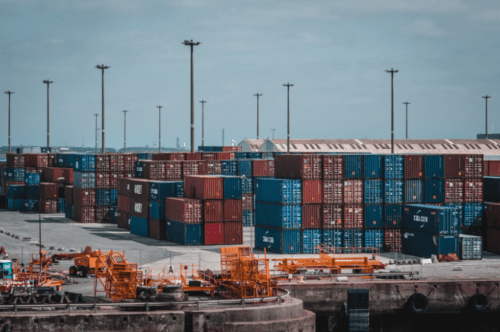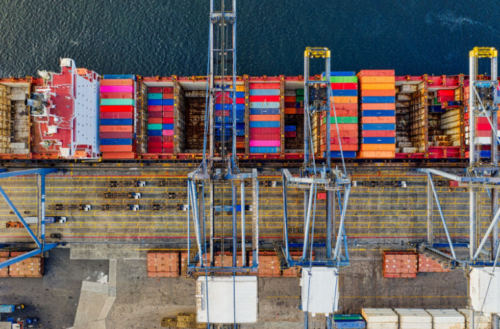Drayage: Meaning, Importance, and Types

Large container ships move cargo from port to port across the continent. Trucks and railways move cargo within countries. Consider, however, the smaller, more intricate steps that allow freight to move between transportation modes.
These smaller national movements are collectively called drayage and are crucial to shipping logistics.
What Is Drayage?
Drayage is a form of short-haul transport, usually within a single urban area. Unlike long-haul shipping, it’s typically completed within a single shift.
Despite its short distance, drayage provides a necessary link in multimodal transport. It connects trucks, railways, ships, and even air freight, allowing goods to move across countries and continents.
Drayage can also refer to smaller-scale operations unique to specific markets.
For example, shopping malls use drayage to move goods from a centralized drop-off location to individual stores. Rather than each store having a receiving dock, trucks deliver cargo to a central dock in the mall. From there, mall employees sort the clothing, shoes, knick-knacks, and other items, and deliver them to the proper retailers.
Trade shows also use drayage when they ship all exhibitor goods to a central warehouse before the show. Then, they have to distribute those goods to each exhibitor booth.
Though these small-scale instances may make the concept easier to understand, they’re not what most people refer to when discussing drayage in the shipping industry.
Intermodal Drayage
Most of the time, people refer to drayage in the context of intermodal shipping. In intermodal transport, items are typically packed into standardized containers that can move directly from one mode of transportation to the next without repacking.
With such container shipping, drayage usually begins at a port, but it can take several different forms from there. It can include a variety of transport terminals, such as rail yards or warehouses.
As an example, let’s say a container is at the Port of Los Angeles but is ultimately destined for the Midwest. It probably needs to get from the port to a rail hub. The journey from the port to the rail hub will likely be via drayage trucks.
The History
The history of the term may help clarify its meaning.
Drayage literally means to transport by sideless car or cart. Originally, such carts were horse-drawn. A dray horse could only pull a heavy load so far. So, drayage always referred to short-distance transport from a marine port to a railway or storage warehouse.
Today, we use semi-trucks instead of horses, but the concept is the same. Drayage services transfer cargo from the port of entry to the next form of transport or some sort of storage.
The Important Role Drayage Plays in the Shipping Process

Understanding the importance of drayage to shipping logistics should make sense if you’ve ever played with dominoes. Many refer to drayage as “the first mile” because, like the first domino in a row, it significantly affects forward operations.
If the first domino doesn’t fall the right way, none of the other dominoes will either. Drayage can have the same effect on shipping. If containerized cargo doesn’t move from the port to the next form of transport swiftly and smoothly, the entire supply chain can back up.
Take the Los Angeles and Long Beach ports as an example. These two ports are collectively called the San Pedro Complex, and together they handle more container ships than any other complex in the world. As a result, the drayage market here is massive, amassing billions of dollars annually.
Over the past few years, both ocean ports have been historically congested, causing massive numbers of shipping containers to remain stuck in port.
The San Pedro supply chain backup has several factors at play, including labor union politics, global trade issues, and consumer behavioral change—more people are ordering items online than ever before, leading to huge volumes of shipped cargo.
However, drayage load issues are also a key problem at these ports. Lack of warehousing space, rising transportation costs, and lack of chassis all fall under drayage services and are all problems in the San Pedro complex.
This goes to show that though short-distance transport is a small piece of the supply chain, it’s an integral one. If something goes wrong with drayage services in a major port, it affects the entire supply chain, ultimately hurting consumers.
Different Types of Drayage Services

According to the Intermodal Association of North America, there are six types of drayage. Below, we give a simple definition for each drayage classification.
Shuttle
In shuttle drayage, the intermodal unit goes from a port or rail yard to a parking lot or storage lot because the railway has run out of room.
Pier
In pier drayage, freight trucks transfer shipped cargo from rail hubs to a port or pier.
Door-to-Door
In door-to-door drayage, an intermodal unit is a retail unit that goes directly to a consumer.
Inter-Carrier
Inter-carrier drayage refers to transport that moves an intermodal unit “across town” from different carriers within the same metropolitan area.
Intra-Carrier
Intra-carrier drayage is the movement of an intermodal unit from a rail hub to another intermodal hub where both hubs belong to the same carrier.
Expedited
Expedited drayage is usually held to a tight time constraint because the freight is time-sensitive.
Frequently Asked Questions
Let’s answer a few of the most frequently asked questions about drayage.
Are there drayage fees? If so, how are they implemented?
Yes, there are multiple types of fees associated with drayage, including chassis-split fees and drop fees. Typically, you incur fees when a truck picks up your shipping container at the arrival point and again if storage is necessary.
Are there risks associated with drayage?
As with any form of shipping, drayage carries some risks. There could be issues with clearing customs, for example. Or, there could be a lack of carrier capacity when your shipment reaches the marine port.
What information do you need to coordinate a drayage service?
You need to provide the weight of the load and container size. You also need to state the needed arrival date and give any relevant information on the load, such as whether or not it’s refrigerated.
Final Thoughts
Though it’s a small piece of the shipping puzzle, drayage services are integral. If there’s a drayage problem, the entire supply chain struggles. It’s crucial that we get “the first mile” correct, which means ensuring good drayage.
